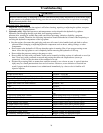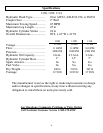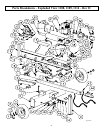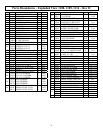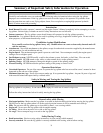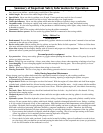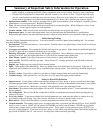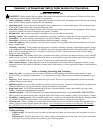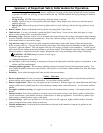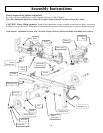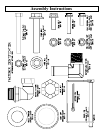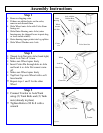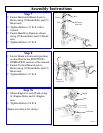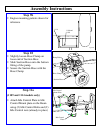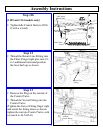
Summary of Important Safety Information for Operation
37
• NOTE for vertical position loading: Place the log on the endplate and turn it until it leans against the beam and
is stable. If the log is too big or oddly shaped, stabilize the log with wooden shims between the log and endplate
or ground. DO NOT use your leg or knee to stabilize the log. NEVER stabilize the log by placing your hand on
top of the log.
•
Wedge moving. NEVER load or unload logs while the wedge is moving.
•
Cracks. Cracks in logs can close quickly and pinch fingers. Keep fingers away from any cracks that open in
partially split logs
.
•
Split log pile. Move each log away from log splitter after it is split. Split logs left near the log splitter are a trip
hazard
.
• Remove hands. Remove both hands from log before activating Split Control Lever.
• Hand activate. Use only your hand to operate the Split Control Lever. Never use any other body part, or a rope,
cable, or other remote device to actuate the control.
• Returning wedge. Once the control valve is actuated in the return direction, the wedge is designed to keep returning
by itself completely and then stop automatically. Stay clear while the wedge is returning. It is still powerful enough
on the return stroke to cause serious injury.
• Log stuck on wedge. If a log does not split completely and becomes stuck on the wedge, follow the instructions
below to remove the log. A log can become stuck to the wedge if the wedge becomes embedded in the log and the
log doesn’t split and separate. This can happen if the log is too stringy or tough to split completely. A stuck log will
move back with the wedge on the initial attempt to retract the wedge. If this happens, retract the wedge completely to
allow the splitter to strip the log from the wedge. Keep hands clear of log and wedge while wedge is retracting.
WARNING: NEVER attempt to remove a stuck log by:
• Modifying the splitter.
• Adding attachments to the splitter.
Personal injury could result from log or metal pieces flying out at high speed toward the operator or bystanders, or the
splitter could become damaged.
• Changing splitting position. Do not change splitting positions (horizontal/vertical) with the engine running. You
may contact the muffler and receive serious burns. Be careful to avoid contact with hot muffler even after the engine
is turned off.
• Refueling. Never refuel the engine until it has cooled at least two minutes.
Safety – After use
• Return to horizontal. If in the vertical position, turn off engine and return log splitter to the horizontal position for
greater stability and to prepare for transportation. Avoid contact with hot muffler.
•
Remove engine debris. Debris on a hot engine can be a fire hazard. With the engine off, clean debris and chaff from
engine cylinder head, cylinder head fins, blower housing rotating screen, and muffler areas. Avoid contact with hot
muffler.
•
Let engine cool before storing. Let engine cool for at least five minutes before storing. A hot engine can be a fire
hazard.
•
Storage location. Store the log splitter in a location away from sources of heat, open flames, sparks or pilot lights –
such as water heaters, space heaters, furnaces, clothes dryers, or other gas appliances. Even if the log splitter’s gas
tank is empty, residual gasoline vapors could ignite.
•
Gasoline storage. Store extra gasoline in a cool, dry place in an UL approved, tightly sealed container. Gasoline
vapors can ignite if they collect inside an enclosure.
•
Periodic maintenance. Perform periodic maintenance as directed in this manual to keep the log splitter in safe
working condition.



